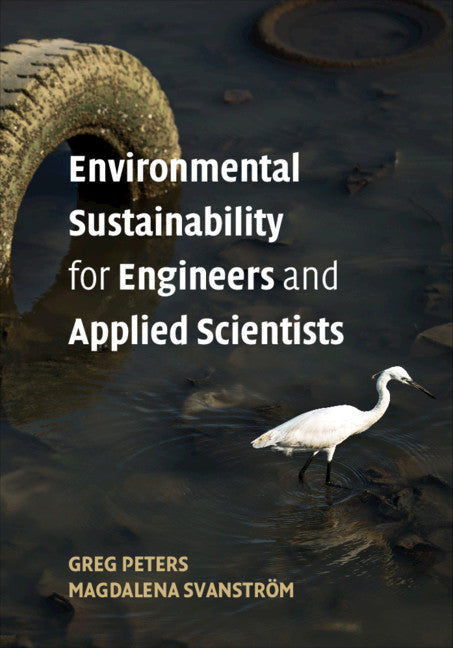Freshly Printed - allow 4 days lead
Couldn't load pickup availability
Environmental Sustainability for Engineers and Applied Scientists
Connects a qualitative perspective of environmental management with the quantitative skills used by engineering and applied science students.
Greg Peters (Author), Magdalena Svanström (Author)
9781316617731, Cambridge University Press
Paperback / softback, published 14 March 2019
258 pages, 94 b/w illus. 2 maps
25.3 x 17.8 x 1.2 cm, 0.57 kg
'This book … focuses on the pressing issue of encouraging engineers and applied scientists to consider sustainability in their designs. Hopefully, this text will get into the hands of all engineers and applied scientists who recognize that sustainability is everyone's responsibility, not just for those with 'environmental' in their titles.' B. Bero, Choice
This textbook presents key theoretical approaches to understanding issues of sustainability and environmental management, perfectly bridging the gap between engineering and environmental science. It begins with the fundamentals of environmental modelling and toxicology, which are then used to discuss qualitative and quantitative risk assessment methods, and environmental assessments of product design. It discusses how business and government can work towards sustainability, focusing on managerial and legal tools, before considering ethics and how decisions on environmental management can be made. Students will learn quantitative methods while also gaining an understanding of qualitative, legal, and ethical aspects of sustainability. Practical applications are included throughout, and there are study questions at the end of each chapter. PowerPoint slides and jpegs of all the figures in the book are provided online. This is the perfect textbook on environmental studies for engineering and applied science students.
Preface
Reader's guide: how is this all connected? 1. The engineer's role in environmental protection
2. The Earth system: natural operation and human impacts
3. Impacts of chemical pollution
4. Modelling environmental transport and fate of pollutants
5. Introduction to toxicology
6. Qualitative and quantitative risk assessment
7. Environmental assessment of products and processes
8. Regulatory structures
9. Decision-making
References
Index.
Subject Areas: Environmental science, engineering & technology [TQ], Civil engineering, surveying & building [TN], Chemical engineering [TDCB], Sustainability [RNU], Conservation of the environment [RNK], Environmental management [RNF], Environment law [LNKJ], Environment, transport & planning law [LNK], International environmental law [LBBP], Risk assessment [GPQD]


